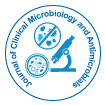

Perspective - (2022)Volume 6, Issue 3
Alphaproteobacteria is a class of bacteria from the phylum Pseudomonadota (formerly Proteobacteria). Magnetococcales and Mariprofundales are considered basal or sister to Alphaproteobacteria. Alphaproteobacteria are very diverse and share few features in common, but still share a common ancestor. Like all proteobacteria, its members are gram-negative, and some of its intracellular parasitic members lack peptidoglycan and are therefore gram-variable.
Development'
There is some disagreement about the phylogeny of the orders, especially regarding the placement of the Pelagibacterales, but overall there is some agreement. The discordance stems from the large difference in gene content (e.g. genome streamlining in Pelagibacter ubique) and the large difference in GC content between members of several orders. Specifically, Pelagibacterales, Rickettsiales, and Holosporales contain species with AT-rich genomes. It has been argued that this could be a case of convergent evolution resulting in artifactual clustering. However, several studies disagree.
Furthermore, it was found that the GC content of ribosomal RNA (a traditional phylogenetic marker for prokaryotes) only slightly reflects the GC content of the genome. One example of this atypical decorrelation of ribosomal GC content with phylogeny is that members of the Holosporales have much higher ribosomal GC content than members of the Pelagibacterales and Rickettsiales, even though they are more closely related to species with high genomic GC content than members of the last two orders.
The class Alphaproteobacteria is divided into three subclasses Magnetococcidae, Rickettsidae and Caulobacteridae. The core group is the Magnetococcidae, which is composed of a large diversity of magnetotactic bacteria, but only one has been described, Magnetococcus marinus. Rickettsidae consists of intracellular Rickettsiales and free-living Pelagibacterales. Caulobacteridae consists of Holosporales, Rhodospirillales, Sphingomonadales, Rhodobacterales, Caulobacterales, Kiloniellales, Kordiimonadales, Parvularculales and Sneathiellales. Comparative analyzes of sequenced genomes have also led to the discovery of many conserved insertional deletions (indels) in widely distributed proteins and entire proteins (i.e., signature proteins) that are characteristic of either all Alphaproteobacteria or their various major orders (see Rhizobiales), Rhodobacterales, Rhodospirillales, Rickettsiales, Sphingomonadales and Caulobacterales) and families (see Rickettsiaceae, Anaplasmataceae, Rhodospirillaceae, Acetobacteraceae, Bradyrhiozobiaceae, Brucellaceae and Bartonellaceae).
These molecular signatures provide new means for delineating these taxonomic groups and for identifying/assigning new species to these groups. Phylogenetic analyzes and conserved indels in a large number of other proteins provide evidence that Alphaproteobacteria branched later than most other bacterial phyla and classes except for Betaproteobacteria and Gammaproteobacteria.
The phylogeny of the Alphaproteobacteria has been constantly revised and updated. There is some debate about the inclusion of the Magnetococcidae in the Alphaproteobacteria. For example, an independent class of proteobacteria (Etaproteobacteria) was proposed for the Magnetococcidae. A recent phylogenomic study suggests the placement of the protomitochondrial clade between the Magnetococcidae and all other alphaproteobacterial taxa, suggesting an early divergence of the protomitochondrial lineage from the rest of the alphaproteobacteria, except for the Magnetococcidae. This phylogeny also suggests that the protomitochondrial lineage is not necessarily closely related to the Rickettsidae.
Characteristics
Alphaproteobacteria are a diverse taxon and include several phototrophic genera, several C1-metabolizing genera (e.g. Methylobacterium spp.), plant symbionts (e.g. Rhizobium spp.), arthropod endosymbionts (Wolbachia) and intracellular pathogens Riettsia. Additionally, this class is sister to protomitochondria, a bacterium that was engulfed by a eukaryotic ancestor to give rise to mitochondria, which are organelles in eukaryotic cells (see endosymbiotic theory). A technologically interesting species is Rhizobium radiobacter (formerly Agrobacterium tumefaciens): scientists often use this species to transfer foreign DNA into plant genomes. Aerobic anoxygenic phototrophic bacteria such as Pelagibacter ubique are alphaproteobacteria that are widely distributed and may comprise more than 10% of the microbial community in the open ocean.
Citation: Tify I (2022) Development of Alphaproteobacteria and its Characteristics. J Clin Microbiol Antimicrob. 06: 140
Received: 18-Nov-2022, Manuscript No. JCMA -22-20969; Editor assigned: 23-Nov-2022, Pre QC No. JCMA -22-20969 (PQ); Reviewed: 07-Dec-2022, QC No. JCMA -22-20969; Revised: 14-Dec-2022, Manuscript No. JCMA -22-20969 (R); Published: 21-Dec-2022 , DOI: 10.35248/JCMA.22.6.140
Copyright: © 2022 Tify I. This is an open-access article distributed under the terms of the Creative Commons Attribution License, which permits unrestricted use, distribution, and reproduction in any medium, provided the original author and source are credited.